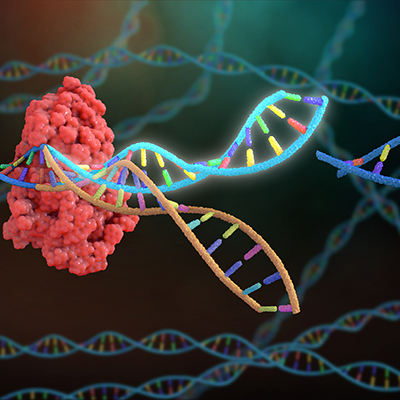October 25, 2022 -- Single-molecule real-time (SMRT) sequencing has enabled Rice University researchers to find and quantify unintended genetic changes that can occur when CRISPR-Cas9 makes on-target DNA cuts.
Off-target edits have dominated research into the safety of CRISPR-Cas9, reflecting concerns about the harm the gene editing technology could cause on the rare occasions that it mistakenly cuts the wrong part of the DNA. However, a 2018 paper linked CRISPR-Cas9 to significant on-target mutagenesis such as large deletions (LDs) and more complex genomic rearrangements at the targeted sites.
Rice University researchers have built on the 2018 paper by working to identify and quantify on-target changes. The project, details of which were published in the journal Science Advances, was enabled by SMRT sequencing with dual unique molecular identifiers (UMI). Gang Bao, PhD, a Rice bioengineer and co-author of the paper, outlined the approach in a statement to publicize the study.
"To quantify large gene modifications, we need to perform long-range PCR, but that could induce artifacts during DNA amplification. So, we used UMIs of 18 bases as a kind of barcode," Bao said. "We add them to the DNA molecules we want to amplify to identify specific DNA molecules as a way to reduce or eliminate artifacts due to long-range PCR. We also developed a bioinformatics pipeline to analyze SMRT sequencing data and quantified the LDs and large insertions."
The analysis showed that LDs of up to several thousand bases occur with high frequencies at on-target Cas9 cut sites. Bao and his collaborators found the rate of LDs ranged from 11.7% to 35.4% on the HBB gene in hematopoietic stem and progenitor cells (HSPCs). The rates for HBG and BCL11A in HSPCs were 14.3% and 13.2%, respectively, while the rate for programmed cell death 1 in T cells was 15.2%. The team also found lower rates of intermediate deletions and large insertions.
While the study quantifies the unintended changes, it does not clear up the questions about how the deletions and insertions happen or the functional consequences they may have. Potential consequences of LDs in the coding region of a gene include the production of truncated proteins, potentially from both the target gene and nearby genes.
The team at Rice is now analyzing the downstream consequences of LDs on mRNA and plans to study the question at the protein level. Specific questions the team hopes to answer include whether the LDs and insertions persist after the gene-edited HSPCs are transplanted into mice and patients.
Copyright © 2022 scienceboard.net








